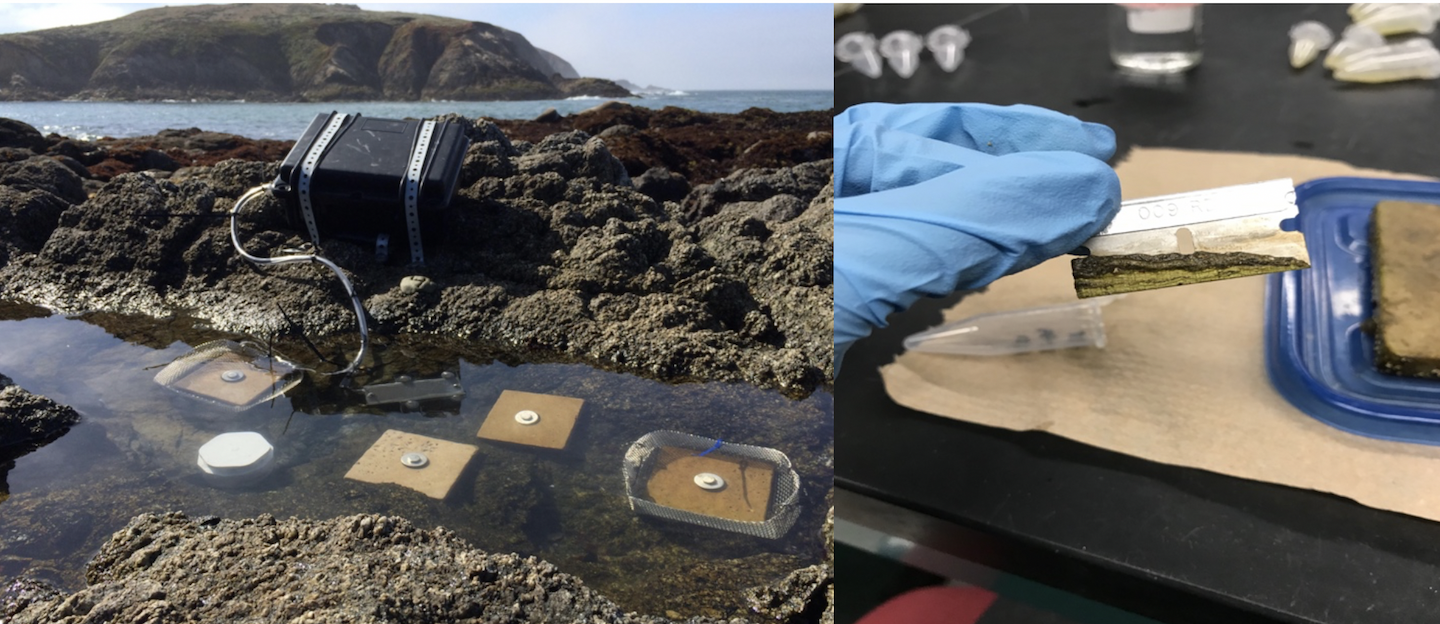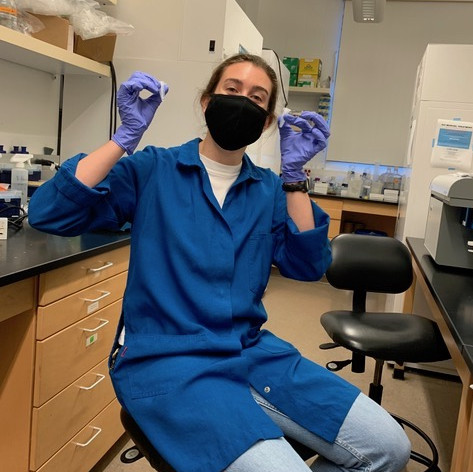By: Lauren Lees
Hello! My name is Lauren Lees and I’m a rising third year PhD student in Dr. Matt Bracken’s marine biodiversity lab at UC Irvine. In the lab, we study all sorts of interactions on rocky shores, but I focus my work on marine microbes and how they interact with macrobiota.
I graduated from College of Charleston in 2017, where I mainly studied invasive seaweed Aarophyton vermiculophyllum with Dr. Erik Sotka. After graduation, I switched gears to biogeochemical oceanography where I joined Dr. Jack DiTullio on a 3 month cruise around Antarctica and investigated the limiting factors of phytoplankton (specifically Phaeocystis) in the Southern Ocean. My time at sea introduced me to the world of marine microbes and allowed me to think of intertidal biodiversity in a new, microbially-focused way. These experiences melded my interests in coastal ecology with microbial processes and led me to where I am today studying interactions between microbes and macrobiota in coastal systems and how that affects ecosystem functioning.

Carrying dead batteries in coolers attached to backpacking frames back to the lab along the bluff at Bodega Marine Lab after early morning experimental tidepool maintenance last summer
Lately I’ve been exploring how intertidal marine invertebrates affect microbial benthic communities, and how those interactions are affected by temperature and increased nutrient concentrations. During my first two years of my PhD, I’ve been a part of a large project looking at the top-down effects of bottom up processes in intertidal ecosystems. Last summer, we continued field experiments at Bodega Marine Lab and Corona Del Mar where we manipulated herbivore abundance (by removing and adding herbivores to pools) and access to benthic primary producers in tide pools using tiles and wire fences. This allows us to investigate how herbivores directly (e.g. consumption, slime trails) and indirectly (e.g. nutrient excretion) affect the benthic microbial community. Additionally, we manipulated temperature and nutrient concentration in these tidepools to see how these changes affected the interactions between the herbivores and the benthic microbes. This meant carrying hundreds of pounds of batteries in and out of the intertidal daily and counting and plucking all herbivores out of some pools, but it was worth it as I see some cool preliminary results.
At the end of the experiment, tiles were removed, and I scraped each one to collect the microbial community. I’ve been working this past year to extract DNA and sequence each sample for 16S and 18S rRNA genes to understand the bacterial and eukaryotic communities in these tidepools, and how herbivores and tidepool conditions affect this community. Essentially, we’re looking at all aspects of biodiversity in these tidepools—from large to very small.

Left: Tidepool with herbivores removed. The black box holds the batteries for the heating element and the white dome is the slow-release nutrient dispenser. Right: Biofilm scraped off of a tile at the completion of the experiment
This summer, I was hoping to switch gears and return to working with macroalgae on Catalina, but COVID had other plans. I have always wanted to work with kelps—it’s one of the reasons I came out west for grad school. I’m particularly interested in the role the microbiome plays in allowing kelps to utilize different forms of nitrogen, especially in areas with more urbanization and nitrogen pollution. To examine the role of the microbiome of two species of kelp (Ecklonia arborea and Macrocystis pyrifera), I plan to mechanically remove or disrupt the microbes on the surface of the blades and perform nitrogen uptake experiments. By repeating these experiments at sites with less nitrogen pollution, like Catalina, and at more urban areas along the coast of southern CA, I hope to learn more about the interactions between the kelps and the microbes in processing nitrogen and how the microbial communities change with increasing nitrogen pollution.
While COVID has disrupted my plans for summer field work, I have been lucky to get back in the lab recently to complete the 16S sequencing that was originally supposed to happen in March. Although this presented a major delay in my projects, I’ve been busy trying to write and get ahead of grant proposals due in the fall. Additionally, I began working on a meta-analysis comparing organic and inorganic nitrogen uptake rates in macroalgae. I hope this project will help familiarize me with the diverse metabolic pathways of macroalgae to better inform my kelp experiments. It has definitely felt strange to not be in the field this summer, but I’m looking forward to working on Catalina for the first time and getting my hands on some kelp.




